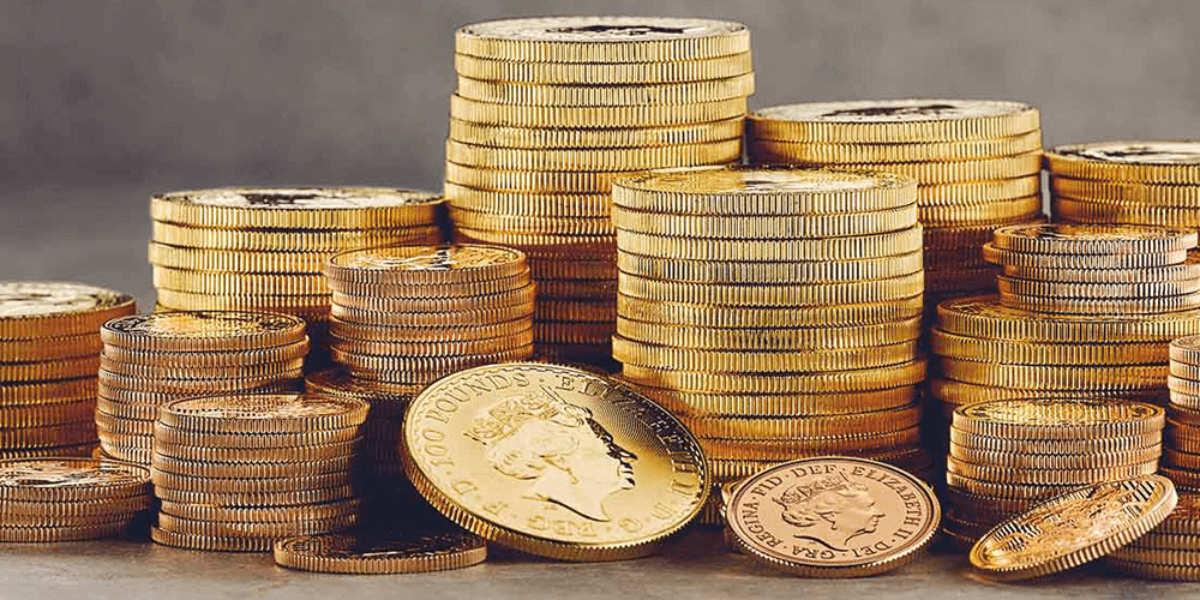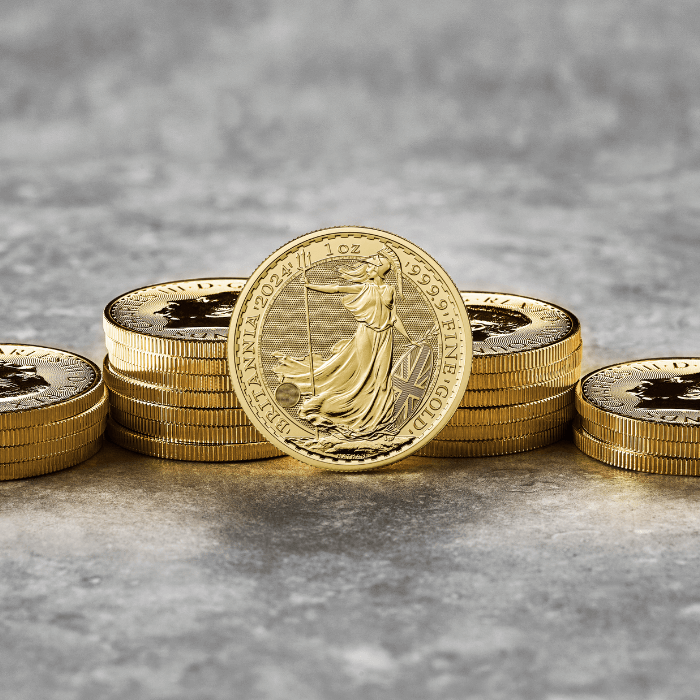The spectre of ‘stagflation’ and gold price performance
Category: Invest

Gold’s explosive move higher through March and into April saw its price achieving highs of around £1,950 (USD: $2,400), before trimming those gains in the past two weeks as the gold price consolidates around these new levels.
We wrote about the beginning of this move back in March, where we noted the price move into new highs of around £1,700 (USD: $2,160), only for the price to march higher again. We also considered the price conditions which would likely need to be met for the gold price to hold these new breakout price levels, and ultimately trend higher. (Gold’s ‘Break Out’ | The Royal Mint)
The geopolitical backdrop of the Middle East has no doubt provided greater interest in the safe- haven metal; however, the economic backdrop continues to play a positive role. The latest economic narrative speaks of ‘stubborn’ or ‘sticky’ inflation, and recent data points are showing inflation coming in above consensus expectations, alongside weak economic growth and labour markets. High (above-trend) inflation, coupled with weak growth and jobs data is often termed ‘stagflation’, which is a portmanteau of ‘stagnant’ and ‘inflation’.
The term stagflation is entering the public consciousness once again. IFA Magazine notes, ‘Google searches in the US for stagflation have risen significantly, [however] they are still below previous peaks in February 2008 and May 2022.’ (Invesco/ IFA mag) Chairman of the United States Federal Reserve, Jerome Powell, was even forced to refute that the US economy was close to meeting these conditions in his latest statement, demonstrating how the term has risen back into the economic view. (WSJ)
So what does (potential) stagflation mean for gold investors?
Stagflation challenges conventional economic wisdom, as it defies the typical relationship between economic growth, inflation and employment. In a stagflation environment, economic growth remains sluggish or negative, whilst inflation is entrenched and unemployment persists. This confluence of factors creates uncertainty and volatility in financial markets, prompting investors to seek refuge in assets perceived as stores of value.
Historically, gold has served as a hedge against economic uncertainty and inflation. Its intrinsic value, scarcity and universal acceptance contribute to its status as a safe-haven asset. During periods of economic turmoil, investors flock to gold as a means of preserving wealth and diversifying portfolios. Consequently, gold prices tend to rise during times of stagflation as investors seek protection from the eroding purchasing power of fiat currencies. As Forbes notes: ‘the last major bout of stagflation in the US was the period between 1973 and 1979. During this time inflation averaged approximately 8.8% per year and gold gained an astonishing 35% annual return. This would seem reasonable as inflation is associated with a weaker dollar and, in this environment, market participants are usually drawn to commodities to preserve purchasing power.’ (Forbes)
Investor sentiment plays a significant role in driving gold prices during stagflation. Heightened economic uncertainty and risk aversion can amplify the appeal of gold as a safe-haven asset, fuelling speculative buying and driving prices higher.
In conclusion, the possible resurgence of stagflation in the US (the ‘West’) could pose significant implications for gold prices. Whilst the precise trajectory of gold prices during stagflation remains uncertain, historical precedent suggests that gold would be poised to perform well in such an environment. Investors will be closely monitoring economic indicators and market dynamics to see whether the ‘perfect storm’ does, in fact, materialise.
The Royal Mint offers a wide variety of precious metal bullion bars and coins (Capital Gains Tax – CGT – exempt*) and combines quality craftsmanship with world-class vaulting arrangements. To learn more, please visit our Bullion Investment page.
Notes
The contents of this article are accurate at the time of publishing, are for general information purposes only and do not constitute investment, legal, tax or any other advice. Before making any investment or financial decision, you may wish to seek advice from your financial, legal, tax and/or accounting advisers.
This article may include references to third-party sources. We do not endorse or guarantee the accuracy of information from external sources, and readers should verify all information independently and use external sources at their own discretion. We are not responsible for any content or consequences arising from such third-party sources.
Sources:
Gold’s ‘Break Out’ | The Royal Mint
Invesco: Stagflation? Sticky inflation? Seven reasons for investors to be positive - IFA Magazine
Jerome Powell Isn’t Too Worried About Inflation - WSJ
How Does Gold Perform With Inflation, Stagflation And Recession? (forbes.com)









